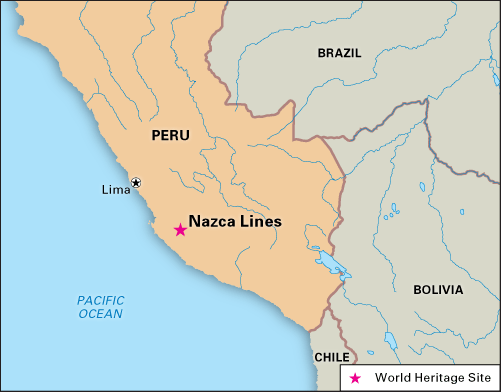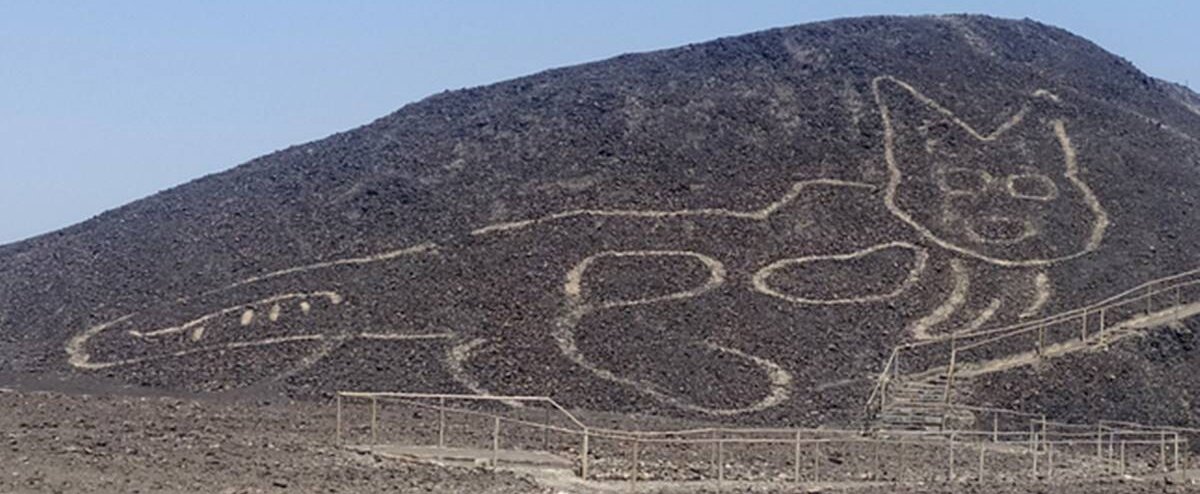Important Facts For Prelims
Nazca Lines: Peru
- 21 Oct 2020
- 2 min read
Why in News
Recently, a giant cat geoglyph was discovered on a hill at the famous Nazca Lines site in Peru.
Key Points
- The Nazca Lines:

- These are a group of geoglyphs known for the depictions of larger-than-life animals, plants and imaginary beings.
- Geoglyphs are the large designs made on the ground by creators using elements of the landscape such as stones, gravel, dirt or lumber.
- These are believed to be the greatest known archaeological enigma, owing to their size, continuity, nature and quality.
- The site is around 450 km away from capital Lima.
- Drawn more than 2 millennia ago on the surface of southern Peru’s arid Pampa Colorada, the geoglyphs feature different subjects, but mainly plants and animals.
- The figures include pelicans (the largest ones sized around 935 feet long), Andean Condors (443 feet), monkeys (360 feet), etc.
- Variety of geometric shapes such as triangles, trapezoids and spirals, and some have been associated with astronomical functions.
- Discovery and Heritage Site: The Lines were first discovered in 1927, and were declared a World Heritage Site by UNESCO in 1994.
- These are a group of geoglyphs known for the depictions of larger-than-life animals, plants and imaginary beings.
- The Cat Geoglyph:

- Cultural Linkage: It dates from 500 BC – 200 AD (Paracas age). The cat geoglyph is believed to be older than the ones previously found at Nazca.
- The Paracas culture was an Andean society existing between approximately 800 BCE and 100 BCE, with an extensive knowledge of irrigation and water management. It was in present day Peru in the Paracas Desert region.
- Representations of felines of this type are frequent in the iconography of ceramics and textiles of the Paracas society.
- Cultural Linkage: It dates from 500 BC – 200 AD (Paracas age). The cat geoglyph is believed to be older than the ones previously found at Nazca.






